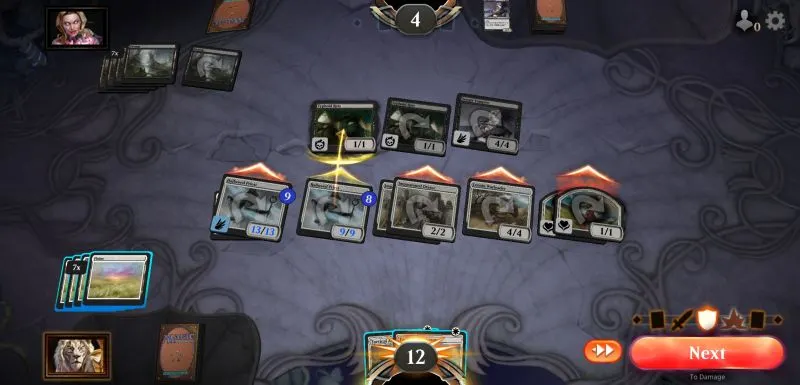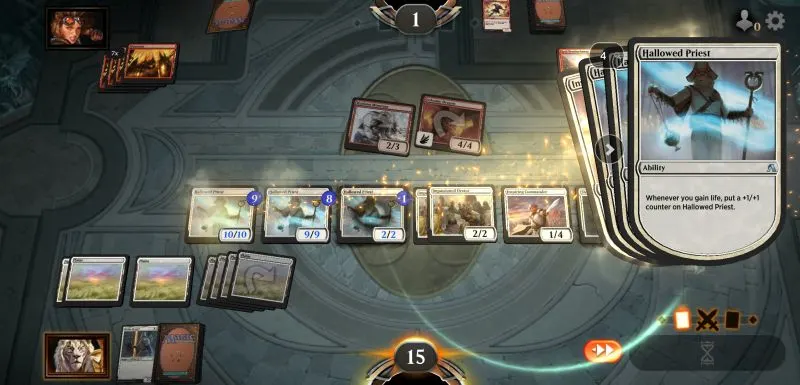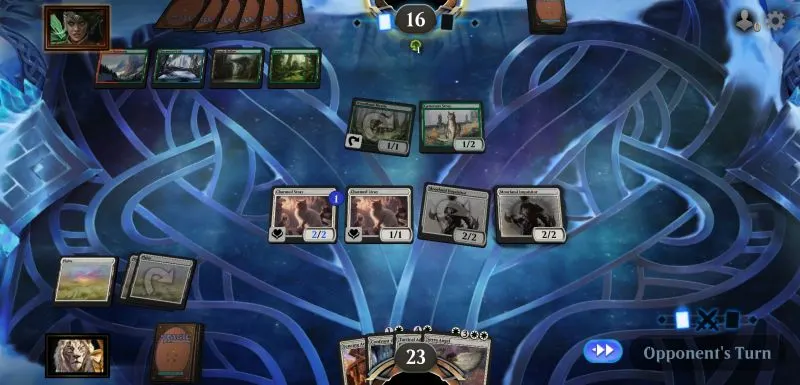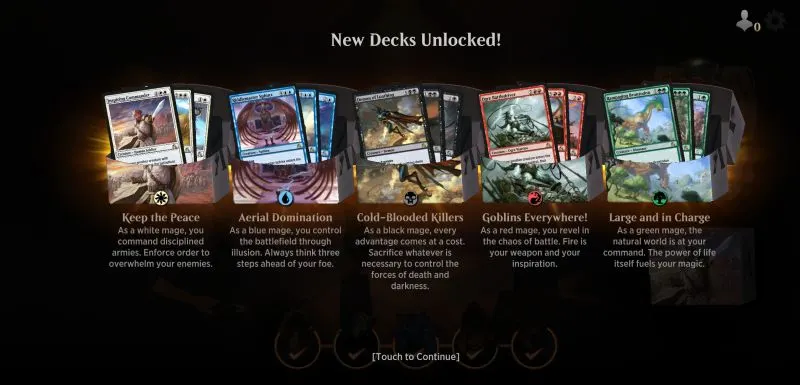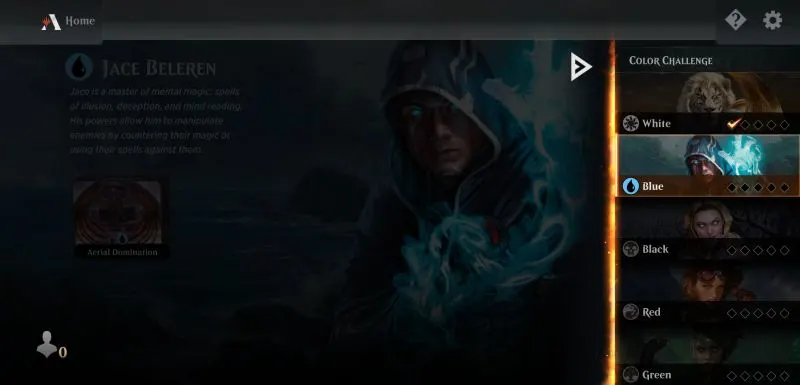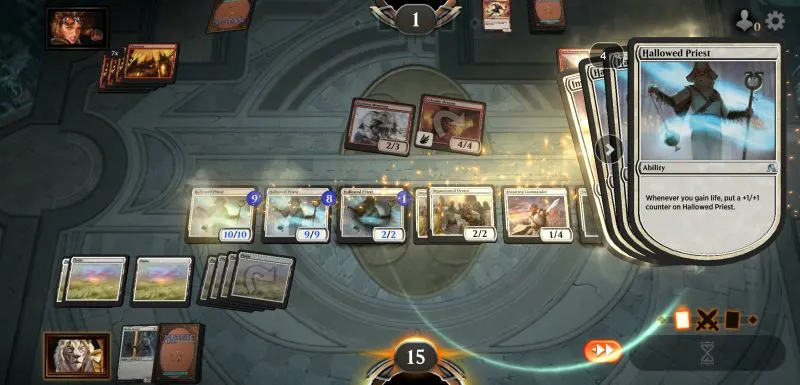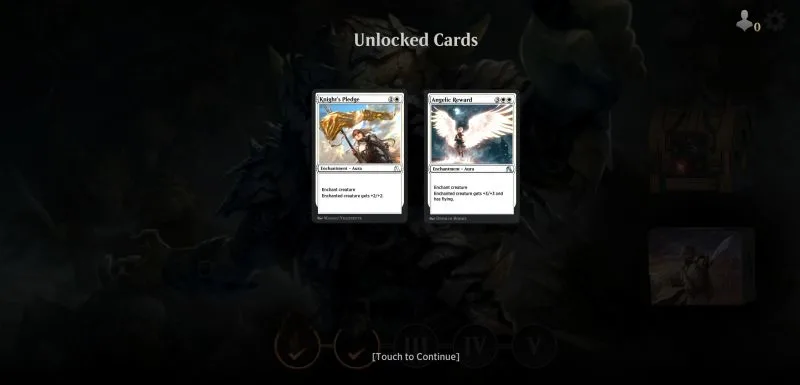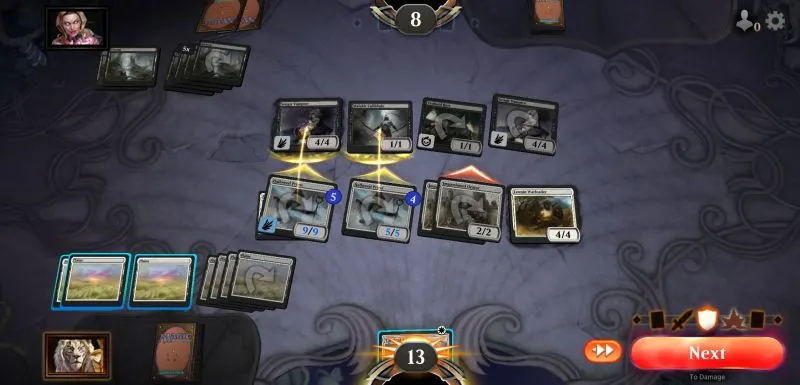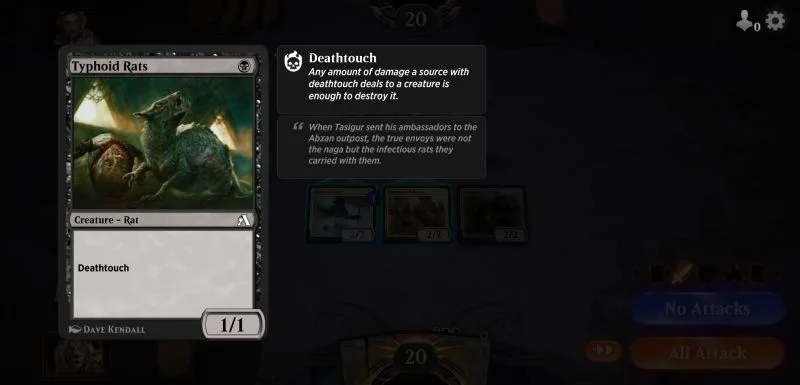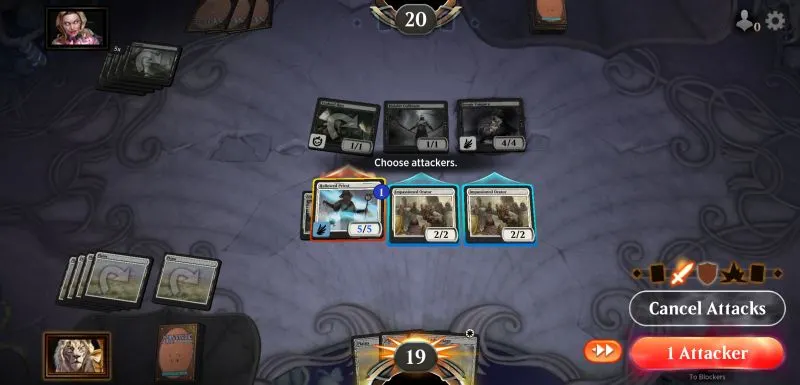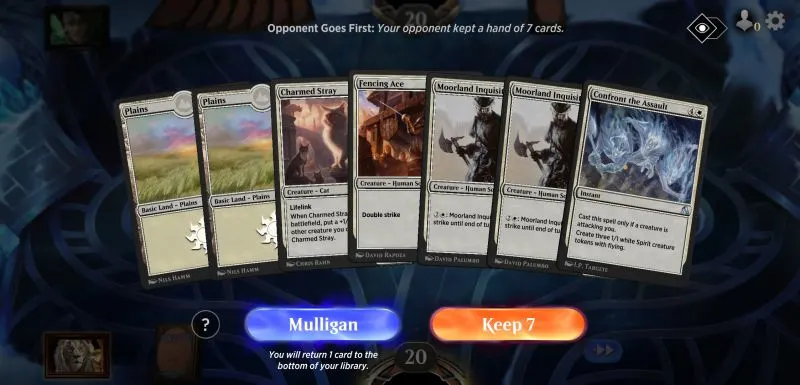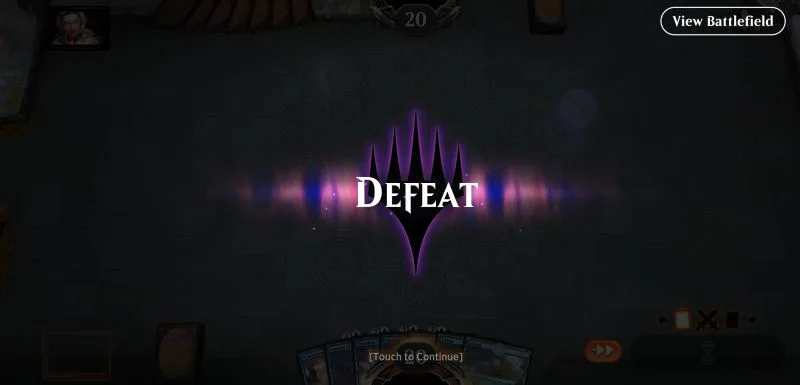The long wait for Collectible Card Game (CCG) enthusiasts on mobile is finally over as Wizards of the Coast has recently released Magic: The Gathering Arena for iOS and Android platforms. Magic: The Gathering certainly does not need any introduction to anyone who has played any CCG before as it was the first CCG ever made and has since been at the top of the charts for 27 years.
Magic: The Gathering Arena is designed to cater not just for experienced and veteran players of the popular CCG, but complete beginners as well who has no experience playing it before. While the available cards you can use and decks you can build in Magic: The Gathering Arena is but a small fraction of what the franchise’s physical version has to fully offer, the available cards for now is more than sufficient to create a wide array of decks.
While Magic: The Gathering Arena is a game that has an element of luck involved like all other CCGs, how you choose to build your deck and how you strategize around playing each card become the more dominant factor that determines how you will perform in each duel.
Despite its expansive set of rules mixed in with a plethora of card abilities, Magic: The Gathering Arena is still relatively easy to pick up and play. If you are itching to test your strategic skills, but have no physical cards and real-life friends or opponents to contend with, then Magic: The Gathering Arena is definitely the best way for you to hone your dueling skills!
Magic: The Gathering Arena is designed in such a way that makes it very easy for complete newbies to grasp all of the game’s mechanics. The tutorial session is a lot longer than the usual tutorials in most other games but every bit of it has details worth taking note of and the experience of dueling against decks of different colors give you an idea about each one’s unique traits and strengths.
Though there is still much to learn after the tutorial, you can freely make progress at a pace you are comfortable with. While the core feature of every CCG is dueling among real players, Magic: The Gathering Arena provides plenty of PvE content for you to revel in and hone your skills and strategies before engaging in PvP battles.
If you have just started playing the game, or still at the stage of planning to do so, and have little to zero knowledge about MTG per se, our Magic: The Gathering Arena beginner’s guide can help bolster the learning process for you and set you up to playing like a pro in no time!
1. Master Basic Deck-Building And Identify Card Types
Magic: The Gathering Arena sets you on the role of a planeswalker, a powerful spellcaster who can tap into the energy that surrounds you and use this mana to summon powerful creatures and cast a wide variety of spells and enchantments. Battles can take place between two or more planeswalkers, each one with a unique and limited pool of spells in the cards that make up their deck.
Each player has a default life points of 20 and loses the match if their life points goes to zero. Players take turns to play lands and spells as well as launch attacks on their rivals with their summoned creatures. Permanents like lands and creatures are tapped whenever they are utilized and will normally untap only at the start of the player’s next turn.
In constructed format, which is the main game mode, the minimum number of cards per deck is 60 and you can only have a maximum of 4 copies for each card unless it is a basic land. Legendary permanents, however, are unique in the sense that only one of each can be in play at a time.
There is no upper limit to the deck size but you would naturally want to keep it at a minimum to raise the probability of drawing the cards that you need much like why you would want to have multiple copies of some cards. Your deck basically consists of lands and spells with the former being your main source of mana to cast spells, usually kept at a third of the entire deck size or 20.
As far as spells go, cards can also be categorized as permanents and non-permanents. Like lands, creatures, artifacts and enchantments are permanents and have lasting effects and remain in play unless they are removed from play. Non-permanent spells like sorceries and instants only have a one-time or temporary effect and go to the graveyard after being casted.
Lands are an integral part of every deck and stands as your main source of mana to cast different spells. You can only play 1 land per turn unless a spell or effect specifically allows you to play more. There are basic lands, each standing for one of the five colors available in Magic: The Gathering Arena. Non-basic land may or may not produce mana and is likewise restricted to 4 copies per deck as well.
Summon creatures are one of the more basic spells in each deck and serve as your main damage-dealers as well as defenders. Summon creatures have an attack and defense stat. Attacks indicate how much damage the creature can deal to the opponent or the opponent’s creature blocking or blocked by your creature.
The creature’s defense determine how much damage it can take per turn and is replenished at the start of the next turn. In general, creatures cannot attack the turn they are summoned due to summoning sickness and also can only be played during your turn. There are, of course, creatures who have abilities that let them stray from the general rule.
While all other non-land permanents require a specific mana color to play, artifacts are generally played using only generic mana or mana of any color. Artifacts can either work like enchantments with abilities that are automatically activated or requires mana and tapping to do so. There are also artifact creatures that work much like summon creatures but are susceptible to spells and effects that affect artifacts.
Enchantments are yet another type of spell that carries with it several subtypes. Enchantments have lasting effects that may impact both players and their gameplay. Some enchantments stand on their own while others need to be attached to its target.
Sorcery spells are non-permanent and can either have a short-term or one-time effect. Sorceries go directly to the graveyard once casted and are not placed in the field like permanents. Instant spells work very much like sorcery spells and the main distinction is that an instant spell can be played any time while a sorcery can only be played during the caster’s main phase.
2. Familiarize Yourself Well With Each Phase Of The Turn
After engaging in a series of duels within the tutorial session, you should have a good enough understanding of what you can and cannot do within your turn as well as the partly routine turn of events that commonly transpire within each turn. It is important, however, to be well familiar with each phase of your turn as well as your opponent’s as this will heavily affect the strategies you may wish to incorporate into each phase.
Every turn in Magic: The Gathering Arena is basically divided into 3 phases: the beginning phase, the main phase, and the end phase. The beginning phase is where you untap all your permanents in the battlefield and is quickly followed by the upkeep. The upkeep is a phase in which some effects resolve like when a permanent requires you to pay certain costs to maintain one of your permanents in play or so. The draw phase is basically where you draw a card from your library and signals the end of the beginning phase.
The main phase is where you can summon creatures, cast spells, and launch an attack against your opponent or their creatures. In essence, the main phase has a pre-combat and post-combat scope. This means that you can play a land any time within the phase and not necessarily before launching an attack against your enemy. Likewise, you can also play spells or summon creatures after combat has resolved. Sorceries can only be used during the main phase but instant spells can be casted any time.
The end phase is the closing stage of the turn where all creatures, both your and your opponent’s recover lost defense. As you can only hold 7 cards in your hand by default, this is the phase as well where you need to discard cards in excess of 7 from your hand to the graveyard. Note that just like the upkeep, some spells and effects resolve during the end phase as well.
3. Choose And Focus On The Color That Suits Your Play Style
While the broadness of the spell types and strategies in Magic: The Gathering Arena is very expansive, most of the cards belong to one of five colors. Each color represents a specialization of sorts, or realms that have its unique attributes, strengths, and weaknesses. Although some of the spell abilities and characteristics may seem to be shared among some colors, most colors have efficiency in their respective fields of expertise.
One important point to keep in mind is that there are no restrictions barring you from using 2 or even all 5 colors in your deck. While multi-colored decks can naturally have the best of what each color has to offer, the difficulty lies in the lands and mana sources to play cards of different colors. As basic lands only generate mana of specific colors, and given the random element of shuffling and card draws, having more than one color of spells in your deck carries with it a lot of challenges as well.
White magic draws its mana primarily from plains and derive its strength from light and order. White magic typically have smaller and weaker creatures that can grow in strength through other creatures and enchantments White magic have spells that can destroy specific permanents like lands, creatures, artifacts and enchantments and also specialize in healing and preventing damage to the player and his creatures.
Green magic thrives from forests and represent life and nature. Green magic surpasses other colors with the variety and strength of the creatures it can summon, fortified even further by its array of spells that can further boost the creatures’ strength. Life gain and regeneration are also attributable to green magic as well as mana generation.
Red magic derives its strength from the mountains and represent the elements of fire, earth, and lightning. Red magic stands as the most offense-oriented color with its spells that deal direct damage to the player as well as the player’s creatures. Red creatures may come as low-cost and fast like goblins or huge and has attacks that can be increased like some of its dragons.
Black magic represents darkness, death and decay and draws its mana primarily from swamps. Black magic thrives on resurrecting creatures from the graveyard, stealing life from the opponent or their creatures, and killing creatures that are blocking or blocked by its creatures through deathtouch. Black magic also exhibit a lot of spells that destroy permanents like creatures and lands.
Blue magic gains mana from the islands and represent the elements of air and water. Blue magic specializes in control and manipulation. Control in this sense does not simply imply gaining control of an opponent’s creature, land, or other permanent, but also extends to controlling what your opponent casts. Blue magic’s control can also extend to control of the library.
Beyond the unique traits and specializations associated with each color in Magic: The Gathering Arena, part of the CCG’s mechanics make it so that each color has a complementing relationship with 2 other colors while clashing with the other 2. White magic synergizes well with green and blue and antagonistic towards both red and black.
Green magic works well with white and red and works much against black and blue. Red magic supports both black and green while opposing green and white. Black works best with red and blue and is commonly built against white and green. Blue supports white and black and counters both red and green.
These are considerations you also need to keep in mind when building decks regardless of how many colors you want to consider using. For starters, however, we recommend sticking with one color first. While there are numerous cards to be familiar with under each color, playing will naturally make it easy to get to know a lot of the available cards in Magic: The Gathering Arena. Finishing the tutorial earns you a deck for each color and it is best to take each one for a spin before you decide on which one to focus on.
4. Maintain A Balanced And Synergistic Deck
Once you clear the tutorial, you are able to engage in a challenge mode utilizing a deck for each color. You will not be able to edit the decks, though, as you will need to clear the respective challenge for that deck first. This is yet another means of securing additional cards for each deck as well. Each of the five starting decks are actually decent and a great fit for any beginner. The decks are essentially balanced and at the same time adheres to a certain theme that incorporates a lot of synergies between numerous cards.
One of the things that may be difficult to notice at first for beginners is each card’s rarity. This is indicated by the color of the card expansion logo at the right side of the card between the image and the text box. Black icons mean that the card is common, silver means uncommon, gold means rare, and bronze means that the card is mythic rare. Rarity is associated with the difficulty of acquiring those cards and should not be misconstrued to mean that the higher the rarity means the better the card is.
Experienced and veteran players of Magic: The Gathering Arena are aware that there are a lot of rare cards in the game that just are not as good as others while there are plenty of common cards that are almost staple to every deck of that color. Although there will be plenty of opportunities to come up with a totally different deck from the default ones later on, it is best for starters to only do minor changes to the deck given the limitations of cards you have at the early part of your journey.
One of the most basic considerations to keep is the ratio between lands and spells. Maintaining a 1:3 ratio or 20 lands and 40 spells for a 60-card deck is a good start. This ratio should be adjusted if you have additional mana sources other than land, have largely low casting cost spells, or having 2 or more colors for the deck.
Another point of consideration to maintain in balance is the average casting cost of cards in your library. Naturally, spells that have low casting costs such as 1 or 2 mana are much easier to utilize than ones that cost 5 or more. Normally, spells that cost more are more powerful as well but then you would not want an opening hand with cards you would not be able to play soon enough. If crunched for luck to the fullest, you may even have a bad land draw and lose the match even before pulling enough lands to cast your powerful spells.
5. Strategize Around Observable Factors
Although you normally will not see the cards in your opponent’s library or hand, there are plenty of information you can gather to strategize around and modify your tactics every step of the way. You can focus on what you know to form assumptions on what you do not know. An opponent’s number of available lands, tapped lands, cards in hand, and cards in the graveyard can often tell you what they may have in store for you.
Suppose you are dueling against a black deck user who decides to discard a high cost, powerful monster in the graveyard intentionally, then you would want to be ready for when the opponent chooses to reanimate the creature from the graveyard and put into play.
You may want to reconsider as well if you are inclined to discard a high cost creature of your own to your graveyard. In this sense, sacrificing your bigger creatures on the field to get rid of its rival in the opposing field can be risky as you do not want to give black decks an advantage by putting more huge creatures in any player’s graveyard.
Red decks are potentially full of instant spells that can easily dispose of your little creatures or weenies. In some cases, red magic users will use the battle phase as an opportunity to kill off blocking or blocked monsters to ensure that the damage they can deal with their spells suffice to eliminate your creatures. Haste or immunity from summoning sickness is a creature ability common to red creatures as well, so expect red deck users to be able to cause you direct damage if you do not have blockers at the start of their next turn.
The direct damage spells of red magic users can almost always ensure an easy kill of creatures on the opposing side. However, against a white deck who has a lot of damage prevention spells or a green deck who can instantly beef up their monsters, careful attention to available mana sources becomes essential.
Checking for the enemy’s available mana sources is even more critical against blue magic users, as blue decks will almost always have counterspells that completely negate your spells and send it directly to your graveyard. Blue decks can also gain control of your permanents and use it for their own so dueling against a blue magic user should leave you prepared to take on your own creatures in some cases.
There will be a lot of unfamiliar cards that will come your way as you engage from one duel to another. Fortunately enough, Magic: The Gathering Arena allows you to get to know all cards that come your way. You can tap and hold on a card to view its details and you should always do so especially on your opponent’s cards.
Finally, you should very well know by now that each of your opponent’s cards can have as many as 3 other copies in his or her library, hand, or graveyard. By taking into account the cards in play and each of the cards in your opponent’s graveyard, you can have a bit of an idea about the possible cards he may have in hand.
At some point, it becomes easier to assume which of your opponent’s cards have multiple copies. Further experience dueling will likewise give you an idea about which cards your opponent’s deck may have based on the first or first few spells that he or she plays.
6. Learn To Bluff And Stray From Conventions
Bluffing and straying away from what you are expected to do might all sound like a strategy for experts but in Magic: The Gathering Arena, these are among the basic strategies you need to master early on. Hints of these basic strategies may arise as early as the initial tutorial sessions and as you step towards the next challenges and matches against real people, these basic tactics become more and more important.
One of the more common applications of these tactics apply to the battle itself whether it is your turn or it is your opponent’s turn. Just because you can attack does not necessarily mean you should. Sometimes, you will be situated in an instance where you can freely attack the opponent because they have no blockers. In some cases, however, opponents can just wait for you to have your creatures tapped so that they can unleash a huge creature with haste to take a bigger bite off your life points than what you have dealt with your attack.
On the other end, blocking an enemy creature with a foreseeable result that would eliminate both creatures may not necessarily be the right thing to do. It may look like fair trade in most cases but that actually depends on a variety of factors.
You may be dueling against a deck color that have creature advantage over you or your creatures may yield more benefits for themselves, for your other creatures, or for you if they are kept alive longer. Valuation of each creature on the field should not be limited to each one’s attack and defense stats and should take into account their innate abilities in tandem with your deck’s color and theme.
It may not be applicable to impose bluffs on an A.I. opponent but against a real player, giving false hints and misconceptions about the surprises that you may have up on your sleeve can impact your opponent’s strategies and decisions.
If you tend to leave some untapped lands and cards in hand at the end of your turn, every action your opponent does will appear to them as having risks involved. In this sense, even if you can empty your hand and play all your cards, you should always keep some in your hand for the false element of surprise. This strategy will not hold as effective if you tap out all mana sources, though.
There is a “save it for later” ambiance in every Magic: The Gathering Arena duel you engage in. There will be numerous instances when the cards in your hand an on the field have you easily dispose of some enemy creatures but the idea of bigger, more powerful creatures to come will always persist in your mind. If you have life points to spare and are still on the early stages of the duel, you can very much afford to do this.
Naturally, this also comes with risks of its own and you will make the wrong calls every once in a while. As similar scenarios recur later on, however, you will naturally be able to make better calls and gauge probabilities and opportunities better.
7. Mulligans, Auto-Passing, And Conceding
The concept of having bad draws is an integral part of every CCG experience. While it is possible to happen across the entire duel, the idea of having a bad starting draw is a little more critical. Magic: The Gathering Arena includes the mulligan concept available to both players before the start of a duel. The idea of taking a mulligan was previously only allowable when you have no lands or all lands at the starting draw. In Magic: The Gathering Arena, you are allowed to take a mulligan at the cost of losing 1 card from your starting hand each instance.
This means that if you do not like the first 7 cards you draw before the start of the match, you can take a mulligan, draw another 7 cards and get to keep 6 of them returning 1 to the bottom of your library. If the cards you drew is simply not good enough as well, you can take another mulligan, draw 7 cards, keep 5 of them and return to the bottom of the library, and so on.
Mulligans are a great feature to ensure that both players start off with the best or at least a good enough starting hand to start the duel with. However, the penalty or payment of losing 1 or more cards, in the case of several mulligans, is a huge catch as well. As such, be sure to always consider carefully before deciding to take a mulligan or keep and bear with your starting hand.
There is an auto-pass feature that maybe a little challenging to notice at the battle screen. This is indicated by the blue fast-forward button at the lower right side of the screen. Auto-passing simply means that you will skip chances of interrupting the enemy’s actions with instant spells or fast effects. While you may have an entire deck devoid of such abilities, chances are that you will be better of straying away from this button early on.
There are times when the luck of draw seems to simply work against you beyond the starting draw. Despite taking mulligans and customizing your deck to its peak form, how randomized decks are shuffled can leave chances for an unfortunate draw and turn of events. Do not get the wrong idea, though, sometimes even a bad start or a less than satisfactory start of a duel can still lead to victories. There are always opportunities to turn the tide any time within the match.
As you get to know your deck very well and have a solid idea of what it can do given your current situation, it can be an acceptable action to concede a match in some cases rather than spend more time to see the outcome that you are most certain will transpire. During the match, you can click on the gear icon at the upper right corner of the screen and tap on the concede option to quickly end the match. For PvP matches, though, we prefer seeing things through to the end as a matter of courtesy to the other player.
8. Losing Is A Natural Part Of The Experience
Regardless of how polished you feel your deck and strategic skills have grown in Magic: The Gathering Arena, there will always be times where you will simply loose the match. It can be due to luck favoring the opposition, a more skilled opponent, the opposing deck happening to have perfect counters for your cards, or a combination or mixture of these factors.
To be honest, even experienced MTG players as well as veterans of the game will occasionally suffer defeat for the same reasons and it becomes part of the learning experience that will make you stronger towards the succeeding matches. You may have decided early on as to the color or colors and theme of the deck you will focus on.
As you engage in a duel against various types of decks, it can even happen that you will adopt one of the builds you encounter as your own later on. Magic: The Gathering Arena is designed to give you an opportunity to build and save up to 75 decks for now and the roster of digital cards being introduced in the game promises to continuously grow as well.
There are certainly a lot more topics we would like to breeze through regarding this game but, for now, this is where we wrap up our Magic: The Gathering Arena beginner’s guide. We certainly hope you learned plenty of tips and strategies in what we shared and that you enjoyed reading our guide as well. If you are an experience player of the game and would want to share your personal tips and strategies with other players, feel free to drop them in the comments!

